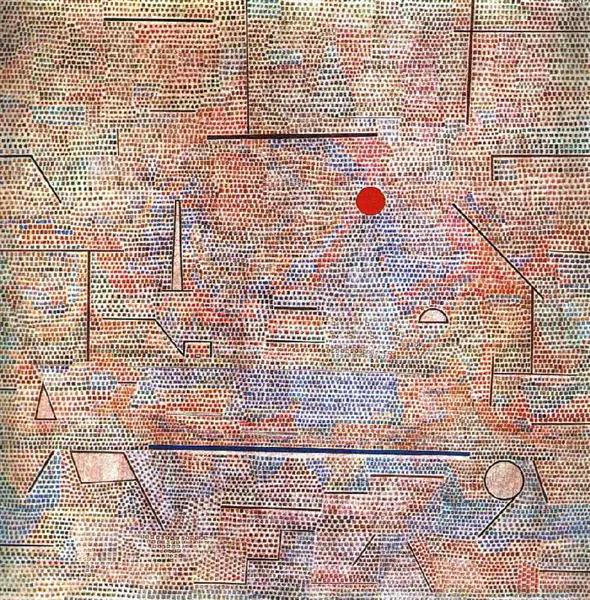Description
Paul Klee's "cacodemonic" work, created in 1916, is an emblematic manifestation of the Swiss artist's unique style, which moves between symbolism, expressionism and abstraction. In this painting, Klee displays a rich and complex chromatic palette, where orange, red and black tones are intertwined to create a disturbing and enigmatic atmosphere.
The "cacodemonic" composition is a study on the form and color, in which Klee uses an almost childish approach in the disposal of the elements. The background, of an orange vibrant, is supported as an energy field that interacts with the geometric structures that are in the foreground. These forms, which remind creatures or abstract figures, emerge from the surface, which could be interpreted as a representation of the subconscious world and the hidden fears of the human psyche.
The characters, if they can be designated thus, seem to float in an indefinite space, accentuating the feeling of uneasiness inherent in the work. The curved lines that border the forms, together with their chaotic disposition, suggest a decomposition of reality, a common dilemma in the context of the Europe of World War I, time when Klee executes this work. This tension between order and chaos, clarity and confusion, is a distinctive seal of Klee's work, who often explored issues of duality and contradiction.
The use of color in "cacodemonic" is particularly remarkable. Klee uses color theory in an innovative way, using intense contrasts to cause an emotional response in the viewer. For example, deep and black red not only create an attractive visual effect, but also evoke a sense of danger and uneasiness. This relationship of colors suggests the internal struggle of the human being in the face of his personal demons, a recurring theme in Klee's work that many critics have commented.
The work is part of a period in which Klee was deeply influenced by symbolism and surrealism, exploring the relationship between mind, sleep and reality. Through "cacodemonic", the artist creates a bridge between the visible and the invisible, inviting the viewer to enter an introspective trip and, often, disturbing.
In summary, "Cacodemonic" is a fascinating example of Paul Klee's visual language and his ability to capture the complexity of human experience. Upon opening before the eyes of the observer, the work not only suggests a dialogue between the spectator and art, but also acts as a mirror where the concerns of a convulsive time are reflected. Klee, with his unique vision, continues to challenge and captivating, and "cacodemonic" remains as a testament to his mastery in the creation of visual worlds that are both personal and universal.
KUADROS ©, a famous paint on your wall.
Reproductions of paintings handmade oil, with the quality of professional artists and the distinctive seal of KUADROS ©.
Art reproduction service with satisfaction guarantee. If you are not completely satisfied with the replica of your painting, we refund your money 100%.

